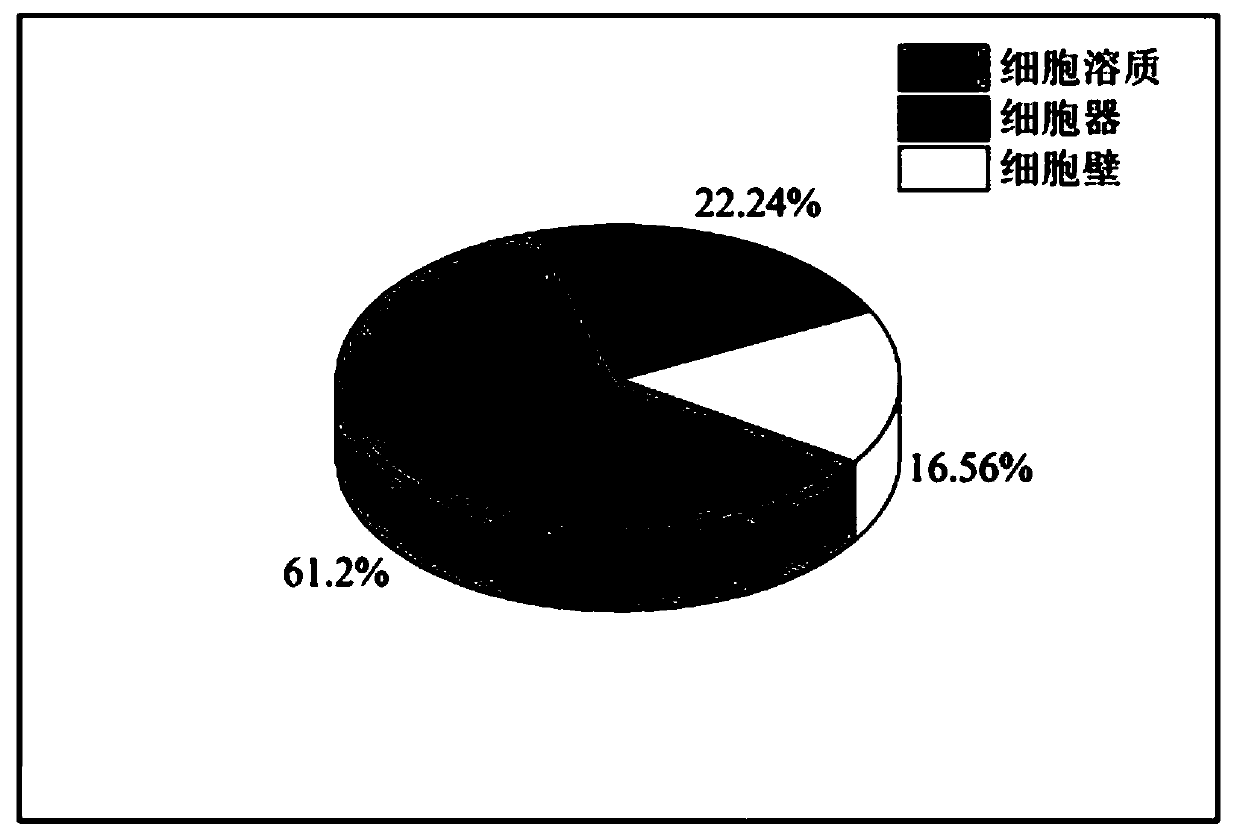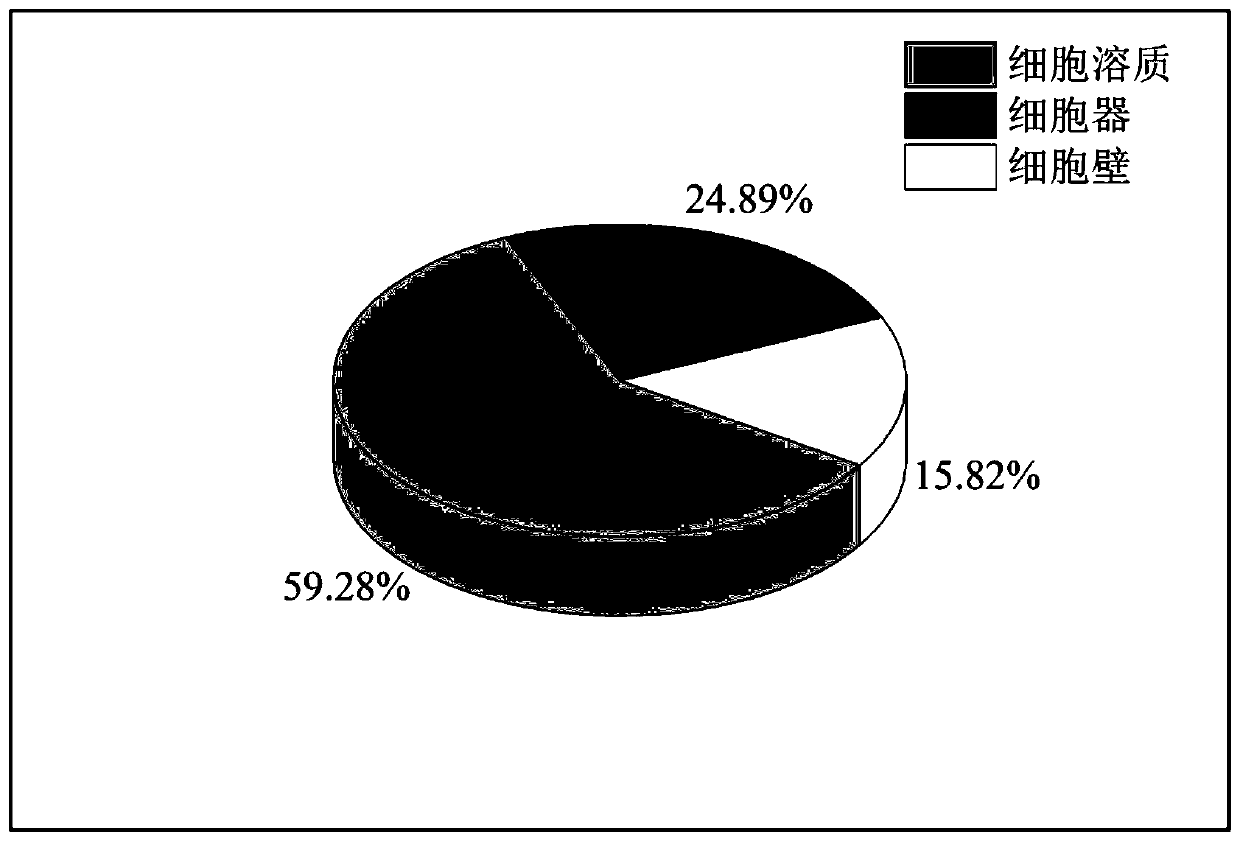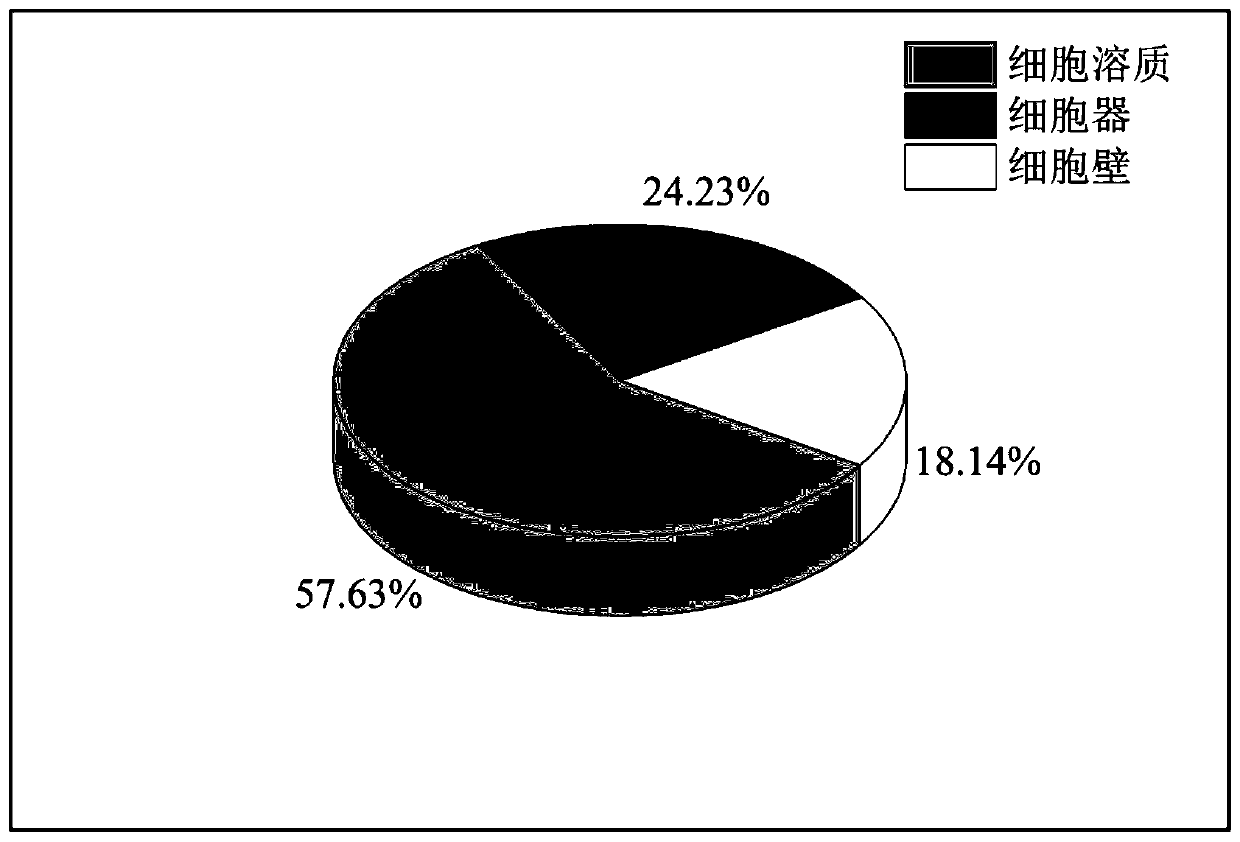Proline Subcellular Isolation Method
A proline subcellular and separation method technology, applied in the field of proline subcellular separation, can solve the problems of low stability of dithiothreitol and the like
- Summary
- Abstract
- Description
- Claims
- Application Information
AI Technical Summary
Problems solved by technology
Method used
Image
Examples
Embodiment 1
[0023] A method for subcellular separation of proline, specifically carried out according to the following steps:
[0024] Step 1, take 0.5g rice seedling sample and grind it into a homogenate in 6ml of 3% sulfosalicylic acid in an ice bath;
[0025] Step 2, centrifuge the grinding liquid obtained in step 1 at 3000r / min at 4°C for 5min at low temperature; save the lower sediment a for later use, centrifuge the supernatant a at 10000r / min for 30min; supernatant b is the cell solution group Points were used to analyze proline; precipitation b was reserved for future use.
[0026] Step 3, dissolve and mix the precipitates a and b in step 1 with 5ml Tris-HCl solution, the Tris-HCl solution is 50mM Tris-HCl pH 7.5, 0.25mM sucrose, 1mM dithiothreitol;
[0027] Step 4, take 600 g of the homogenate obtained in step 3 and centrifuge at a low temperature of 4°C for 1 min at a speed of 2500 r / min, the sediment c is the cell wall part; the supernatant c is the organelle part;
[0028] S...
Embodiment 2
[0033] A method for subcellular separation of proline, specifically carried out according to the following steps:
[0034] Step 1, take 0.4g rice seedling sample and grind it into a homogenate in 5ml of 3% sulfosalicylic acid in an ice bath;
[0035] Step 2, centrifuge the grinding liquid obtained in step 1 at 3000r / min at 4°C for 5min at low temperature; save the lower sediment a for later use, centrifuge the supernatant a at 10000r / min for 30min; supernatant b is the cell solution group Points were used to analyze proline; precipitation b was reserved for future use.
[0036] Step 3, dissolve the precipitates a and b in step 1 with 4ml Tris-HCl solution and mix evenly, the Tris-HCl solution is 50mM Tris-HCl pH 7.5, 0.25mM sucrose, 1mM dithiothreitol;
[0037] Step 4, take 600 g of the homogenate obtained in step 3 and centrifuge at a low temperature of 4°C for 1 min at a speed of 2500 r / min, the sediment c is the cell wall part; the supernatant c is the organelle part;
[...
Embodiment 3
[0043] A method for subcellular separation of proline, specifically carried out according to the following steps:
[0044] Step 1, take 0.6g rice seedling sample and grind it into a homogenate in 5ml of 3% sulfosalicylic acid in an ice bath;
[0045] Step 2, centrifuge the grinding liquid obtained in step 1 at 3000r / min at 4°C for 5min at low temperature; save the lower sediment a for later use, centrifuge the supernatant a at 10000r / min for 30min; supernatant b is the cell solution group Points were used to analyze proline; precipitation b was reserved for future use.
[0046] Step 3, dissolve the precipitates a and b in step 1 with 6ml Tris-HCl solution and mix well, the Tris-HCl solution is 50mM Tris-HCl pH 7.5, 0.25mM sucrose, 1mM dithiothreitol;
[0047] Step 4, take 600 g of the homogenate obtained in step 3 and centrifuge at a low temperature of 4°C for 1 min at a speed of 2500 r / min, the sediment c is the cell wall part; the supernatant c is the organelle part;
[0048...
PUM
 Login to View More
Login to View More Abstract
Description
Claims
Application Information
 Login to View More
Login to View More - R&D
- Intellectual Property
- Life Sciences
- Materials
- Tech Scout
- Unparalleled Data Quality
- Higher Quality Content
- 60% Fewer Hallucinations
Browse by: Latest US Patents, China's latest patents, Technical Efficacy Thesaurus, Application Domain, Technology Topic, Popular Technical Reports.
© 2025 PatSnap. All rights reserved.Legal|Privacy policy|Modern Slavery Act Transparency Statement|Sitemap|About US| Contact US: help@patsnap.com



